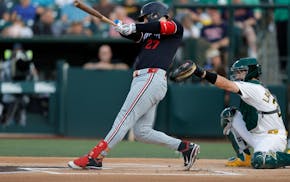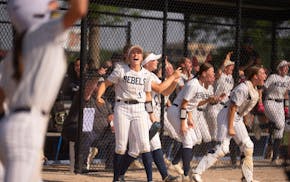The Lynx are returning to regular season play this week after dominating their competition in three-point shooting, assist percentage and defensive rating throughout the first half of the season. They are 17-8 entering Thursday's game against Washington and have emerged as title contenders for the first time since 2017, when they earned their fourth championship trophy.
Their season hasn't been perfect, though. Shortly before the Olympic break, a run of games without star Napheesa Collier challenged just how deep the team really is. Four of the team's eight losses came with Collier sidelined.
Here's what has made the Lynx tough competition and what to look for as they get back on the court.
League-leading assist percentage, largely thanks to newbies
Coach Cheryl Reeve chalks the Lynx's 23.3 assists per game — the most in the league — up to chemistry and selfless playing. Despite not being a "super-team" like the Las Vegas Aces or New York Liberty, the Lynx have a star in Collier, and surrounding her are smart players with complementary skill sets.
"This year's team has maturity with their chemistry," Reeve said in June. "This team has naturally good people. And good basketball players. When the game gets hard, they have each other. They problem-solve together."
What's most impressive is how quickly that chemistry developed. Two players who joined the Lynx just this season — Courtney Williams and Alanna Smith – are responsible for nearly 40% of the team's assists.
On top of facilitating more than 300 points this season, Williams has averaged 9.8 points per game. Smith, originally signed as a rim-defender, is averaging 11.5 points per game and is regularly dominating in the paint.
Three-point shooting sets them apart
The Lynx seem to be able to hit threes consistently from just about anywhere on the court.
When it comes to the best three-point shooting percentage in the league, Lynx players take up four of the top 10 spots. And none of those are Collier, even though she boasts a 31.6% three-point shooting percentage.
High shooting success from three forces opponents to "scramble and get to everyone," Reeve said. "You can't not scramble to someone. And so all of them being able to shoot spreads things out."
Lynx limit opponents to fewer points per possession
Most team's average points per game against the Lynx is lower than their overall points per game so far this season. The Lynx force every team except the Wings and the Sun to score below their usual average.
The Lynx's ability to limit their opponent's assists and three-point shooting percentage has earned them the best defensive rating in the league at 93.7 — and easily their best since 2017, when they last won the title.
They've got three of the top defensive players by defensive win share on their side and lead the league in points off turnovers at 18.6 per game.
This makes sense: a defensive mindset was a particular focus for the Lynx from the moment preseason kicked off after ranking poorly in previous seasons.
Game in the paint is lacking
Collier and Smith are the only Lynx players regularly finding success under the basket, a sharp drop in resources compared to their broad selection of mid-range and three-point sharpshooters.
The team leads the league in shots made from 20-24 feet, but their ranking drops the closer they get to the basket.
They rank dead last in the league for points in the paint at just 28.4 per game.
And it's not just scoring — even their defense close to the basket leaves something to be desired. The Lynx allow their opponents 9.6 offensive rebounds and 26.9 defensive rebounds a game, some of the highest rates in the league. This also allows them to get outscored in the paint time and time again.
Reeve mentioned rebounds and short-range plays as areas the team needed to improve on at the end of June, when the Dallas Wings ended their 11-game losing streak in a win against the Lynx. While the Lynx's offensive rebounding has gotten better over the season, their defensive rebounds have dropped off in the last five games before the break.
"We just can't be last in the league in rebounding percentage," Reeve said. "It's not necessarily why we lost the game in Dallas, but we can't walk out of an arena having allowed the other team to get eight more possessions than us."
The Lynx went into the season knowing they wouldn't be a dominant rebounding team, given they are relatively undersized and can shoot well from three. But if they want to be competitive into the dog days of the season, they'll have to step up their close-range game — and quickly.

Pair of home runs help Twins roll to another victory over Athletics, 6-1

Softball state tournament, live from North Mankato: Bloomington Jefferson, Champlin Park reach 4A final
Twins starter López has Grade 2 shoulder strain, expected to miss 2-3 months
Festa gets his wake-up calls and joins Twins in Sacramento

